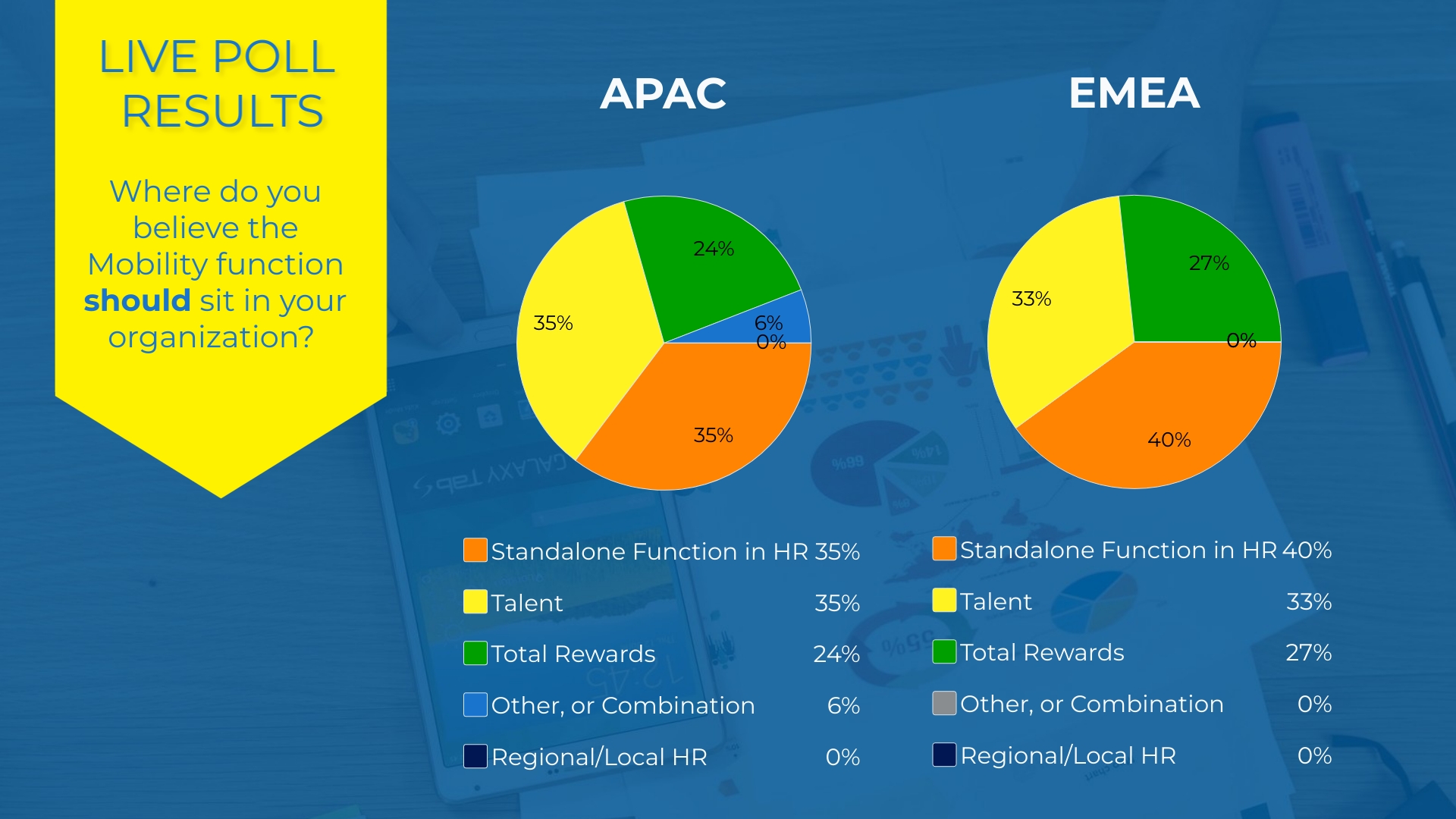
Whether you’ve been drinking the mobility Kool-Aid for decades or are new to the industry, you’ve likely heard about the critical intersection between Talent Management and Global Mobility. Mobility has evolved into so much more than just getting talent from point A to B. Global mobility programs are helping to develop employees, attract and recruit new talent, and ensure they remain engaged – while on assignment and after they return home. The crossover with talent management has never been more apparent.
But while many companies recognize the value and multifaceted nature of the mobility function, there is still little consensus over what the best alignment between talent management and global mobility looks like.
We recently hosted a roundtable with an inspiring lineup of companies and subject matter experts from across EMEA and APAC to glean insight into how these regions are positioning the mobility function to optimize its talent management capacity. The responses were illuminating and left us with plenty of food for thought (certainly enough to generate a whole series of roundtables on this topic alone!).
I am happy to share just a few of the best takeaways from this session, all of which speak volumes about the critical need and varied global approaches to a GM + TM alignment:
Alignment is Necessary as Costs Escalate
- The costs of relocation – international relocation in particular – are high and likely to only get higher amid soaring inflation and rising oil prices. This only elevates the importance of a stringent candidate selection process to ensure we’re sending the right people on assignments (because the cost of a failed assignment has never been higher!). Infusing talent management objectives into the mobility process also entails remaining connected with assignees to analyze their progression even after the assignment is complete to ensure that the investment has long-term value.
Prioritize Alignment with Business Values
- This point also speaks to the need to involve mobility in selecting mobility candidates. Amid the talent shortage, many companies struggle to find the talent required to fit predefined roles. But we need to take a few steps back and think about what SKILLS and CAPABILITIES we need for the business to grow and meet business goals, rather than looking to fill rigid, potentially narrowly defined role descriptions. Isolating these in-demand skills and capabilities also helps to create metrics through which we can track and measure the success of an assignment. If the necessary skills are not being developed through these programs, this indicates that changes must be made to the program itself or the candidate selection process.
You can have the most rigorous, beautifully designed, a generous suite of policies, but if you’ve chosen the wrong person, it’s all for naught. I think that piece of the mobility equation still demands an enormous amount of progress in assessing if the organization is consistently making the right decisions from a talent perspective and identifying and sending the right people on assignment.
But Separation is Good Too.
- An oft-debated topic is where the mobility function should sit organizationally. Traditionally, mobility falls most generally under Rewards or Compensation and Benefits. One corporate participant eloquently argued for the importance of mobility being a separate function. This allows for mobility teams to be empowered to act individually, with no other agenda other than supporting the business most efficiently. “Alignment should, and needs to happen, with the right teams, but ultimately, we perform best when given the resources to function independently of these other stakeholders.”
- INSIGHT FROM OUR LIVE POLL: The majority of EMEA (53.3%) and APAC (52.9%) roundtable participants revealed that their global mobility function is currently a part of “Total Rewards.” Most participants from both regions also agreed that, ideally, GM would operate best as a stand-alone function in HR. Still, an equal number of APAC participants also believed that GM would be best aligned with Talent. In short, these results emphasize that “the perfect alignment” will look different for every company.

The great news: global mobility is in an excellent position to advocate for change, whether allowing it to operate separately or alongside a function that could help amplify its value to the organization. COVID has created tectonic shifts in the world of work, and the global business environment is only getting more complex. More organizations are attuned to the reality that to get the talent they want, retain the talent they have, and plan for future business growth, it’s no longer enough to have a mobility function sitting on the sidelines, dealing solely with the logistical or tactical dimensions of mobility. Mobility is integral to any company’s talent equation and needs to be well aligned with talent management to complement – and enhance – the overall corporate talent strategy.
But wait, there’s more! This roundtable was packed with insight, and we have more to share in the second installment of this blog post. So, stay tuned for the sequel, and in the meantime, if you’re keen to dive deeper into regional workforce mobility trends, talk to us.